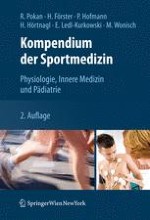Zusammenfassung
Die Hypothese, dass adäquate körperliche Betätigung zu positiven Gesundheitsergebnissen führt, ist nicht neu. Körperliche Aktivität und körperliches Training zur Prävention und Therapie verschiedener Krankheitsbilder werden seit langem propagiert. So finden sich schon im dritten vorchristlichen Jahrtausend bei Hua Tó Anweisungen für ein strukturiertes Bewegungstraining zur Gesunderhaltung. Auch Hippokrates (460–370 v. Chr.) und Galen (ca. 200–129 v. Chr.) glaubten an die Bedeutung regelmäßiger körperlicher Betätigung zur Gesundheitsvorsorge. Vom antiken Erklärungsansatz, der sich auf die biologische Plausibilität stützt, sollte es aber bis zur Mitte des 20. Jahrhunderts dauern, bis der Grundstein für die formale wissenschaftliche Bestätigung dieses Zusammenhangs gelegt wurde.

